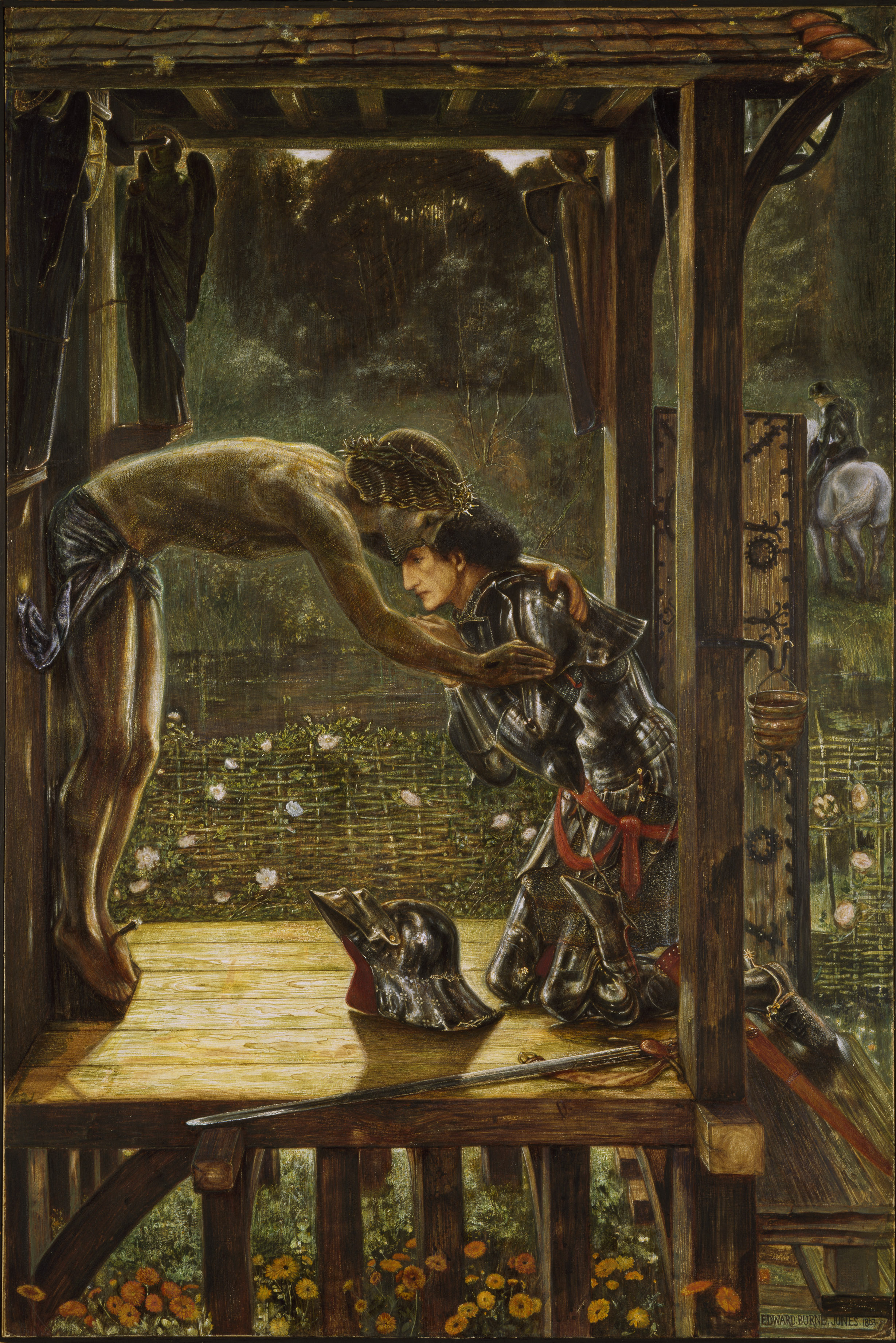|
Vallombrosan
The Vallombrosians (alternately spelled Vallombrosans, Vallumbrosians or Vallumbrosans) are a monastic religious order in the Catholic Church. They are named after the location of their motherhouse founded in Vallombrosa ( la, Vallis umbrosa, shady valley), situated 30 km from Florence on the northwest slope of Monte Secchieta in the Pratomagno chain. They use the abbreviation O.S.B. Vall. to distinguish themselves from the Benedictines, who use the abbreviation O.S.B. Foundation The founder, a Florentine named Giovanni Gualberto, a member of the prominent Visdomini family, was born in the year 985 or 995, and died at Passignano in the year 1073, on 12 July, (his feast day is still celebrated on this day); he was canonized in 1193. His brother was murdered, and it was his duty was to avenge the deceased. He met the murderer in a narrow lane on Good Friday and was about to slay him, but when the man threw himself upon the ground with arms outstretched in the form of a cros ... [...More Info...] [...Related Items...] OR: [Wikipedia] [Google] [Baidu] |
Giovanni Gualberto
Giovanni Gualberto (c. 985 – 12 July 1073) was an Italian Roman Catholic abbot and the founder of the Vallumbrosan Order. Born into a noble family, Gualberto was a predictably vain individual who sought pleasure in vanities and romantic intrigues. When his older brother Ugo was murdered, Gualberto set out for revenge. He found the murderer in Florence, but as it was Good Friday, granted the killer's plea for mercy. Soon after Gualberto became a member of the Order of Saint Benedict though he left in order to found his own congregation. He condemned nepotism and all simoniacal actions and was known for the pureness and meekness of his faith. Even popes held him in high esteem. Miracles were reported at his tomb after his death. Pope Celestine III canonized Gualberto on 24 October 1193. Life Giovanni Gualberto was born circa 985 to nobles who hailed from the Visdomini house; he was born in the castle known as Poggio Petroio. His sole sibling was his older brother Ugo. He was al ... [...More Info...] [...Related Items...] OR: [Wikipedia] [Google] [Baidu] |
Vallombrosa Abbey
Vallombrosa is a Benedictine abbey in the ''comune'' of Reggello (Tuscany, Italy), about 30 km south-east of Florence, in the Apennines, surrounded by forests of beech and firs. It was founded by Florentine nobleman Giovanni Gualberto in 1038 and became the mother house of the Vallumbrosan Order. It was enlarged around 1450 and took on its current appearance at the end of the 15th century. In 1529, after the looting by Charles V, the east tower was built. Between 1575 and 1578, Galileo Galilei was educated there and then withdrawn by his father, before taking orders, and moved to Pisa to study medicine. In the 17th century the walls were erected, and in the 18th century the fishing ponds dug. Today the monastery is open to tourists and its "Antica Farmacia" sells local produce such as herbal teas and liqueurs made following antique recipes. Among these is the rare and legendary Dry Gin of Vallombrosa. On 7 October 1096, Pope Urban II addressed the congregation of Vallo ... [...More Info...] [...Related Items...] OR: [Wikipedia] [Google] [Baidu] |
San Salvi
San Salvi, also known as San Michele a San Salvi, is a church in Florence, Italy. The church was built in the 11th century by the Vallombrosans as part of an abbey complex. During the 1529 Siege of Florence, the church was partially destroyed. It was reconstructed in accordance with its original style with the exception of the portico which was built with a 16th-century style. The interior of the church is of a single aisle, Latin-cross design with a rectangular apse In architecture, an apse (plural apses; from Latin 'arch, vault' from Ancient Greek 'arch'; sometimes written apsis, plural apsides) is a semicircular recess covered with a hemispherical vault or semi-dome, also known as an '' exedra''. .... The refectory contains a masterwork fresco of the ''Last Supper'' (1519-1527) by Andrea del Sarto. References External links The Museums of Florence - Last Supper of San Salvi Salvi 11th-century Roman Catholic church buildings in Italy {{Italy-chur ... [...More Info...] [...Related Items...] OR: [Wikipedia] [Google] [Baidu] |
Santa Trinita 16 Neri Di Bicci
Santa Claus, also known as Father Christmas, Saint Nicholas, Saint Nick, Kris Kringle, or simply Santa, is a legendary figure originating in Western Christian culture who is said to bring children gifts during the late evening and overnight hours on Christmas Eve of toys and candy or coal or nothing, depending on whether they are "naughty or nice". In the legend, he accomplishes this with the aid of Christmas elves, who make the toys in his workshop, often said to be at the North Pole, and flying reindeer who pull his sleigh through the air. The modern figure of Santa is based on folklore traditions surrounding Saint Nicholas, the English figure of Father Christmas and the Dutch figure of ''Sinterklaas''. Santa is generally depicted as a portly, jolly, white-bearded man, often with spectacles, wearing a red coat with white fur collar and cuffs, white-fur-cuffed red trousers, red hat with white fur, and black leather belt and boots, carrying a bag full of gifts for child ... [...More Info...] [...Related Items...] OR: [Wikipedia] [Google] [Baidu] |

